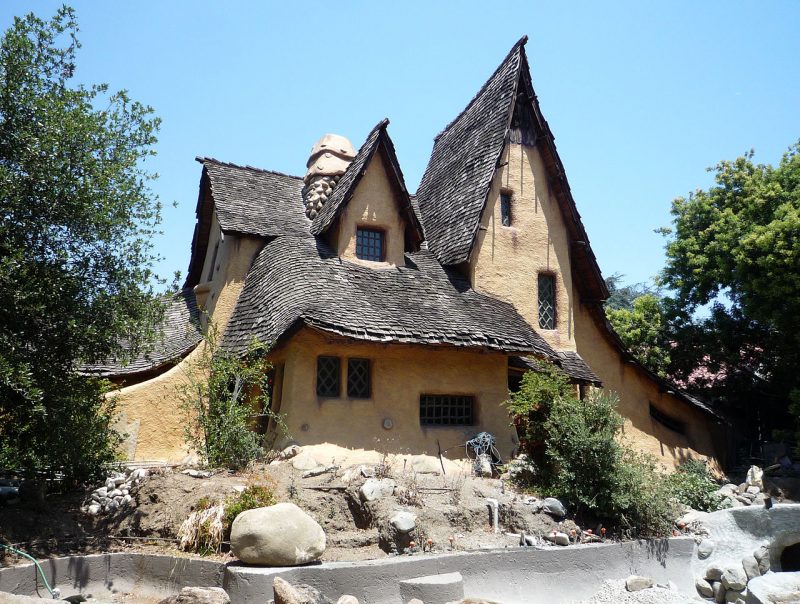The Spadena House, also known as The Witch’s House, is a storybook house in Beverly Hills, California. Located on the corner of Walden Drive and Carmelita Avenue, it is known for its fanciful, intentionally dilapidated design, and is a landmark included on tours of the area.
The house was designed by Hollywood art director Harry Oliver, who went on to play a major role in Storybook architecture. Oliver was a Hollywood art director who worked on more than 30 films between 1919 to 1938 as art director, art department & as set decorator.He is known for his Hollywood work as art director on the films Seventh Heaven (1927) and Street Angel (1928), for which he was nominated for the very first Academy Awards, as well as set design or art direction on the films Ben Hur (1925), Sparrows (1926), Scarface (1932), Viva Villa! (1934), Mark of the Vampire (1935), and The Good Earth (1937).
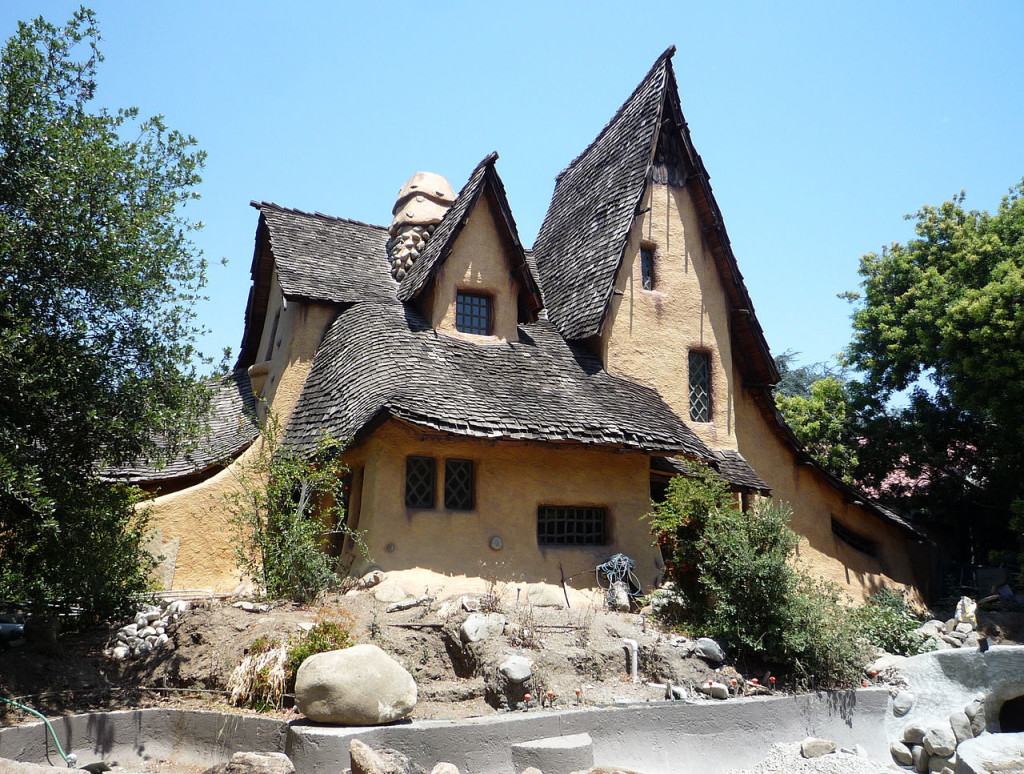
It was originally built in 1921 to serve as the offices and dressing rooms for Irvin Willat’s film studio in Culver City, and was moved to its present location in 1934. The converted private home, with its pointy, lopsided roof, tiny windows and stucco with a distressed paint job were then surrounded by an intentionally overgrown English-style garden and a moat-like pond.
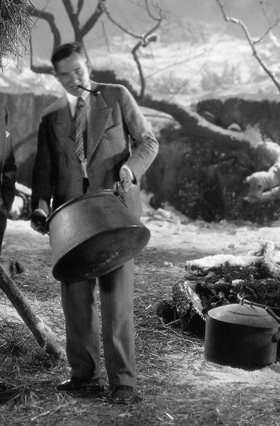
Oliver built a number of adobe houses for himself and his family, both because he liked the aesthetic effect, and because the building materials were extremely inexpensive. The first of these was La Ballona Rancho (named after nearby Ballona Creek), built beginning in 1917 near the old Palms film studios. In 1980 it was still standing at the corner of National and Exposition Blvd. in Los Angeles.
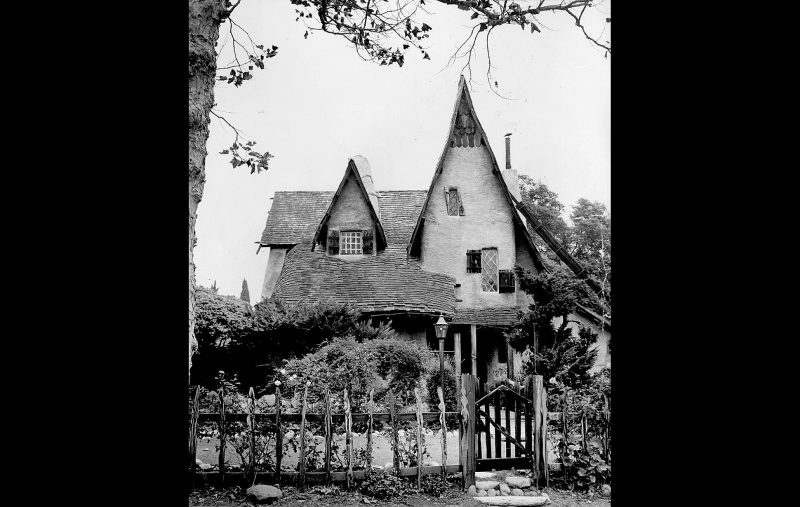
The first residents of the 3,500 square feet (330 m2) home, the Spadena family, lent the house their name. A second family moved in and renovated the interior in the 1960s, making some exterior alterations including a skylight visible from certain angles. The moat began leaking under the second family’s ownership and they filled it with soil, and planted a garden. By the time the house came on the market again in 1997, it had fallen into disrepair. Because of the value of its prime location, it was unable to immediately find a buyer uninterested in a teardown of the property. Consequently Michael Libow, a real estate agent, who did not want to see the home demolished, purchased it and began a gradual renovation. After tall, black fencing was initially placed around the lot, the owner received hate mail from people who thought he was going to tear it down.
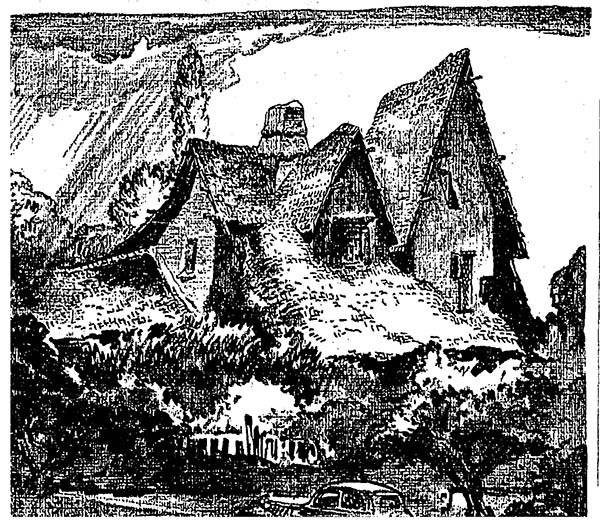
The residence still appears to this day in movies, including 1995’s Clueless.The home has been called a precursor to Walt Disney’s concept of Imagineering, whereby stage sets become fully realized environments. Architect Charles Willard Moore once described the building as the “quintessential Hansel and Gretel house.”
